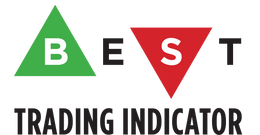Hey there! Let's break down some essential day trading lingo, so you know what's up when you're navigating the world of day trading. We'll cover some must-know terms to help you understand the game better.
Bid and Ask
The "bid" is the highest price someone's willing to pay for a stock, while the "ask" is the lowest price someone's willing to sell it for. You'll often see these two numbers side by side, and the difference between them is called the "spread."
Bull and Bear Markets
When the stock market is doing well and stock prices are rising, we call it a "bull market." On the flip side, when things aren't so hot and stock prices are dropping, we call it a "bear market." Bulls are optimistic, while bears are pessimistic about the market.
Day Trading
"Day trading" is all about buying and selling stocks within the same trading day. Day traders aim to make quick profits by capitalizing on short-term price fluctuations, and they usually close all their positions before the market closes.
Initial Public Offering (IPO)
An "Initial Public Offering" or "IPO" is when a company goes public for the first time. They sell shares of their stock to the public, and it's usually a big deal that can generate a lot of buzz in the market.
Limit Order and Market Order
With a "limit order," you're telling your broker to buy or sell a stock at a specific price or better. A "market order" means you're cool with buying or selling at the current market price, whatever that may be. Limit orders give you more control, while market orders get executed faster.
Margin and Margin Call
"Margin" is when you borrow money from your broker to buy stocks, and it lets you trade with more cash than you actually have. But be careful! If your trade goes south, your broker might hit you with a "margin call," which means you'll need to deposit more money to cover your losses.
Short Selling
"Short selling" is a bit counterintuitive – you sell a stock you don't own, hoping the price will drop so you can buy it back later for a lower price. It's a risky move, but it can be profitable if you're right about the stock's price going down.
Stop Loss Order
A "stop loss order" is your safety net. It's an order you place with your broker to sell a stock if it hits a certain price, helping you limit your losses in case things don't go as planned.
Technical Analysis
"Technical analysis" is when you study stock charts, price patterns, and other market data to predict future price movements. It's all about spotting trends and making educated guesses on where stock prices are headed.
Trading Volume
"Trading volume" is the number of shares being traded in a specific stock during a given period. High trading volume often means there's a lot of interest in a stock, while low volume might indicate that the stock isn't getting much attention.

